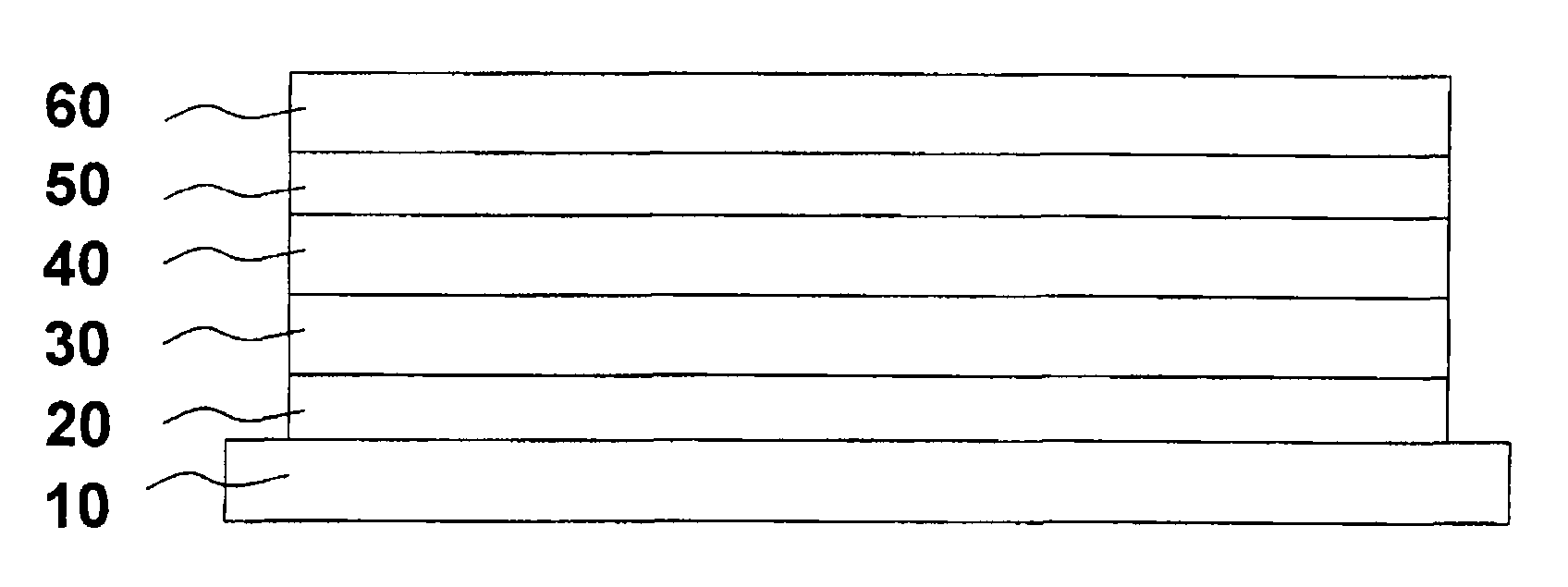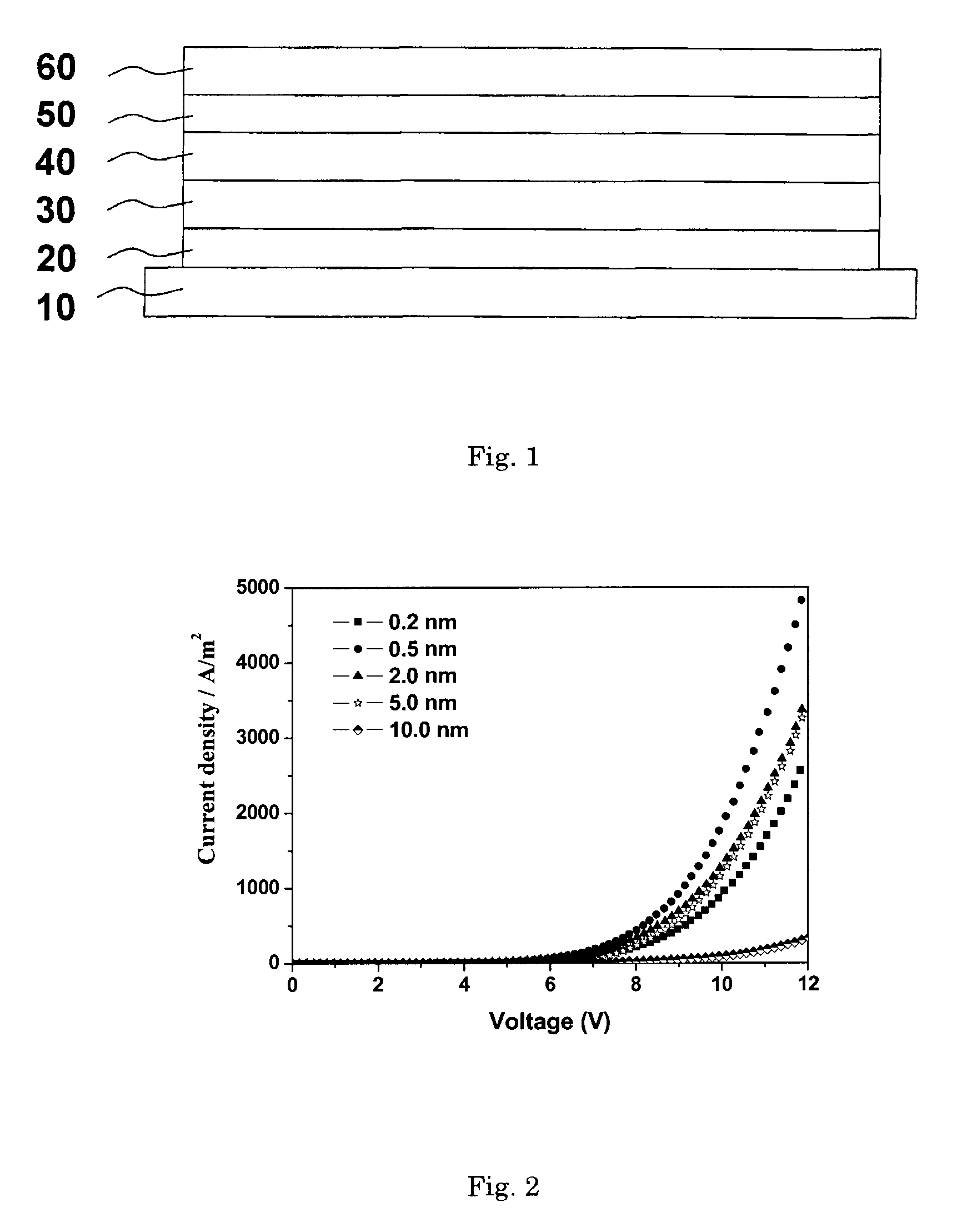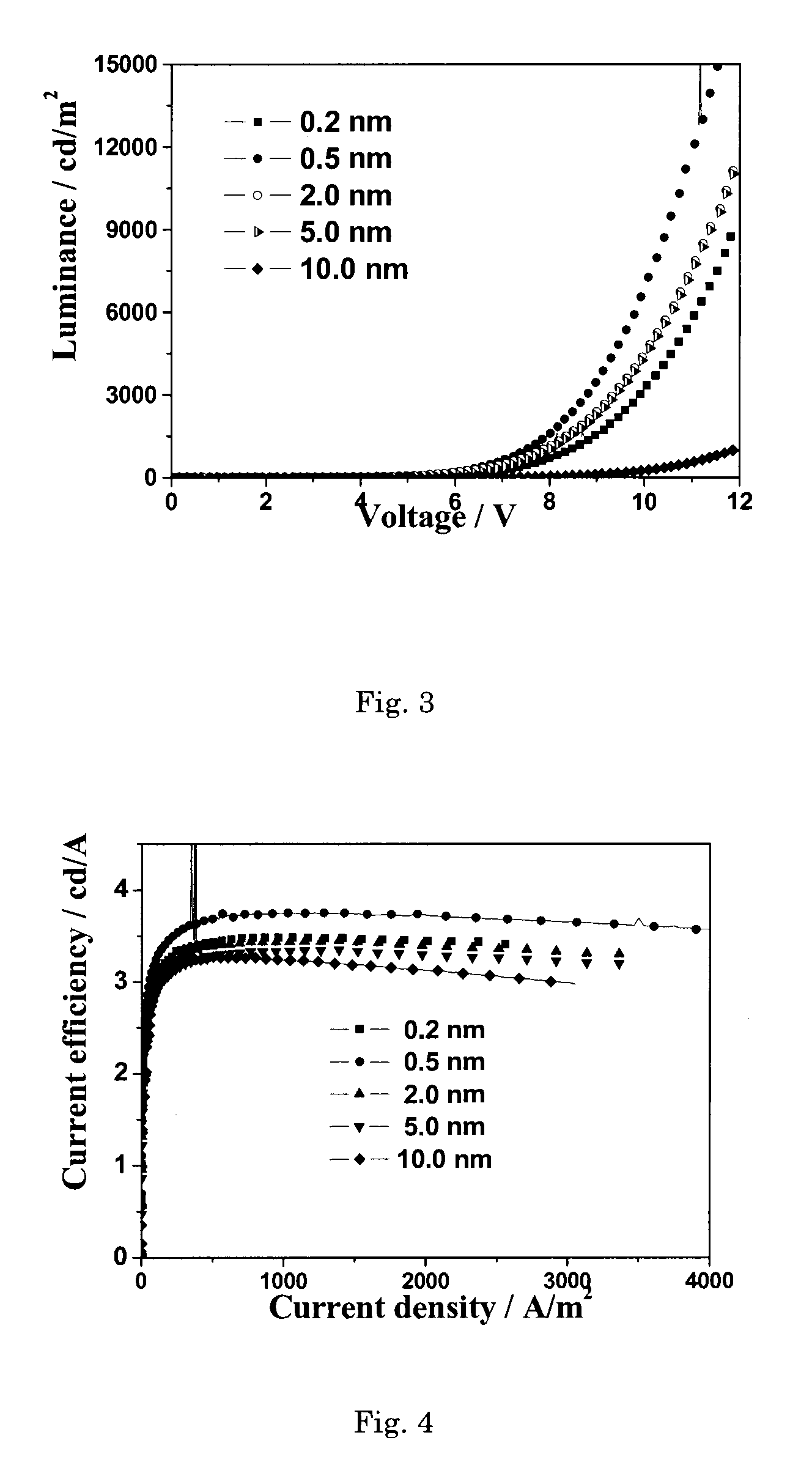Organic light emitting device and fabrication method thereof
a light-emitting device and organic technology, applied in the direction of organic semiconductor devices, discharge tubes/lamp details, discharge tubes luminescnet screens, etc., can solve the problems of low luminance and efficiency, high toxicity, low voltage of organic light-emitting devices, etc., to reduce the electron injection barrier, the effect of high efficiency and low toxicity
- Summary
- Abstract
- Description
- Claims
- Application Information
AI Technical Summary
Benefits of technology
Problems solved by technology
Method used
Image
Examples
embodiment 1
[0038]Refer to FIG. 1, which is a cross-sectional view of a structure of an organic light emitting device of the present embodiment. The organic light emitting device comprises a substrate 10, an anode layer 20, a hole transport layer 30, a light emitting layer 40, a cathode modification layer 50 and a cathode layer 60. The structure of the organic light emitting device of the embodiment of the invention is as follows:
[0039]glass substrate / ITO / NPB(50 nm) / Alq3(70 nm) / KBH4(0.2 nm) / Al(150 nm)
[0040]1) Fabrication of the Organic Light Emitting Layer
[0041]A pre-treated glass substrate is placed in a vacuum chamber. The chamber is evacuated to a pressure of 1×10−3 Pa. Ahole transport material of NPB is evaporated with an evaporation rate of 0.1 nm / s and a thickness of 50 nm. Alq3 is evaporated on the hole injection layer as the light emitting layer and the electron transport layer of the device with a thickness of 70 nm.
[0042]The glass substrate comprises an ITO (Indium Tin Oxide) film and...
embodiment 2
[0048]Refer to FIG. 1, which is a cross-sectional view of a structure of an organic light emitting device of the present embodiment. The organic light emitting device comprises a substrate 10, an anode layer 20, a hole transport layer 30, a light emitting layer 40, a cathode modification layer 50 and a cathode layer 60. The structure of the organic light emitting device in this embodiment of the invention is as follows:
[0049]glass substrate / ITO / NPB(50 nm) / Alq3(70 nm) / KBH4(0.5 nm) / Al(150 nm)
[0050]The method of fabricating the organic light emitting device is similar to that mentioned in embodiment 1. The difference therebetween lies in that a KBH4 layer with a thickness of 0.5 nm is fabricated after fabricating the electron transport layer.
embodiment 3
[0051]Refer to FIG. 1, which is a cross-sectional view of a structure of an organic light emitting device of the present embodiment. The organic light emitting device comprises a substrate 10, an anode layer 20, a hole transport layer 30, a light emitting layer 40, a cathode modification layer 50 and a cathode layer 60. The structure of the organic light emitting device in this embodiment of the invention is as follows:
[0052]glass substrate / ITO / NPB(50 nm) / Alq3(70 nm) / KBH4(2.0 nm) / Al(150 nm)
[0053]The method of fabricating the organic light emitting device is similar to that mentioned in embodiment 1. The difference therebetween lies in that a KBH4 layer with a thickness of 2.0 nm is fabricated after fabricating the electron transport layer.
PUM
 Login to View More
Login to View More Abstract
Description
Claims
Application Information
 Login to View More
Login to View More - R&D
- Intellectual Property
- Life Sciences
- Materials
- Tech Scout
- Unparalleled Data Quality
- Higher Quality Content
- 60% Fewer Hallucinations
Browse by: Latest US Patents, China's latest patents, Technical Efficacy Thesaurus, Application Domain, Technology Topic, Popular Technical Reports.
© 2025 PatSnap. All rights reserved.Legal|Privacy policy|Modern Slavery Act Transparency Statement|Sitemap|About US| Contact US: help@patsnap.com



